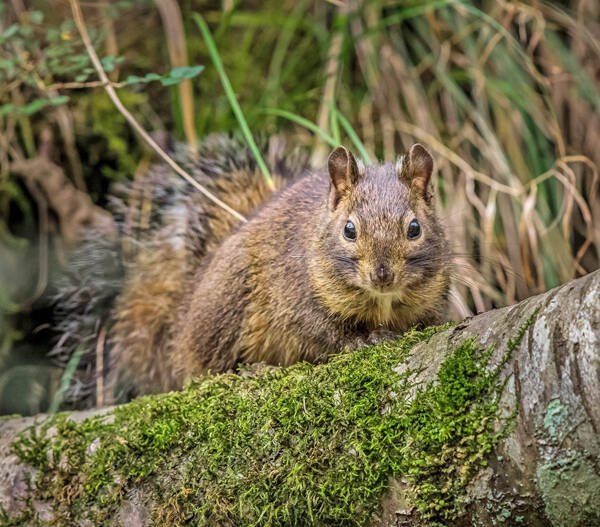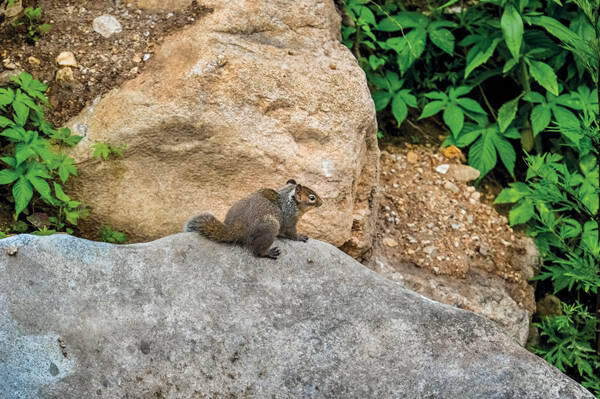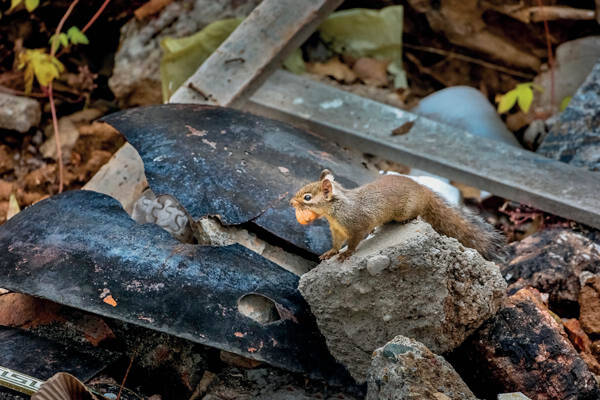Sciurotamias davidianus
IUCN
LCBasic Information
Scientific classification
- name:Sciurotamias davidianus
- Scientific Name:Sciurotamias davidianus,David’s rock squirrel,Sweeper, Stone Rat
- Outline:Rodents
- Family:Rodentia Sciuridae R.Squirrel
Vital signs
- length:Approx. 210 mm
- Weight:
- lifetime:3-12years
Feature
This squirrel has the strongest reproductive capacity, with eight babies in one litter. It also loves to steal.
Distribution and Habitat
It is endemic to China. It is distributed in Liaoning, Hebei, Beijing, Tianjin, Henan, Shanxi, Shaanxi, Gansu, Ningxia, Sichuan, Yunnan, Guizhou, Hubei, Anhui, Guangxi and Chongqing.
It mainly lives in rocky areas in forest environments, is agile, and often builds nests in rock crevices.
Appearance
The back of the body is olive-gray, the abdomen is mostly light yellow-white, and there are no long light white stripes on the sides of the body. The fur on the back of the front and back feet (especially the hind feet) is denser than that of other squirrels. The ventral side of the tail fur is mostly yellow-brown, and the back, sides and tail end mostly have white hair tips. The squamous bones of the skull are high, the zygomatic arch rises to half the height of the snout, the zygomatic process is low and located in front of the midpoint of the eye socket, there is no obvious temporal ridge, the length of the postorbital process is generally greater than 2mm, and there is a plug-shaped third premolar.
Details
Rock squirrels belong to the family Sciuridae in the order Rodentia and are endemic to China. They are medium-sized, with fluffy tail hair that is sparser than the back hair, and a certain amount of all-black needle hair mixed in the middle.
Rock squirrels are semi-arboreal and semi-terrestrial squirrels, mostly living in mountainous and hilly areas with rocks or bare rocks, such as pine forests, mixed coniferous and broad-leaved forests, broad-leaved forests, fruit forests (walnuts, chestnuts and other dried fruits), shrub forests, and other relatively open and not very closed habitats. They are almost invisible at high altitudes and in places with very dense forests.

Rock squirrels are diurnal and live in camps. They build nests in rock crevices. They are alert and bold, and are often seen entering residential houses in mountainous areas. When disturbed, they quickly flee, often stopping and looking back after running for a while. They have strong climbing ability and can move freely in rocky areas such as cliffs, bare rocks, and stone steps. They often make monotonous and continuous loud calls when they are active in the early morning.
Rock squirrels like to eat oily dried fruits, such as pine nuts, walnuts, walnuts, apricots, chestnuts, etc., which are their favorite foods. They can steal crops such as grains. They have the habit of storing food, storing dried fruits in tree holes, etc. A rock squirrel may have multiple storage locations.

Rock squirrels do not hibernate, but their activity in winter is relatively low, mainly after sunrise. Their natural enemies are mainly carnivorous birds of prey and beasts of prey.
Rock squirrels usually reproduce once a year, mating in spring, and can produce 2 to 5 cubs per litter, with a maximum of 8 cubs. Young mice appear in June, and the number peaks in late autumn. The scrotum of male mice is exposed from late February to September and October. The scrotum is particularly enlarged in May and June. The nipples of female mice have atrophied in September and October, indicating that reproduction has stopped at this time.

In hilly areas, rock squirrels are very harmful to crops on terraces. From the time crops just sprout in spring, the seedlings are destroyed. When crops mature in autumn, they are often bitten off and dragged into caves. They have the habit of storing grain and steal a lot of crops. In orchards, they cause serious damage to fruits such as walnuts, mulberries, and persimmons. A rock squirrel's warehouse can store more than 20 walnuts and other crops such as cereals and beans.
This species has been identified as a species with a high population density, and the population is threatened mainly by the large amount of pesticides used in dry fruit forests.








